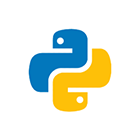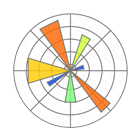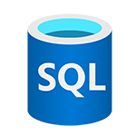What’s Included?
Prerequisites
- Basic Medical Knowledge: Participants should have foundational knowledge of clinical practices, medical terminology and patient care processes.
- Familiarity with Healthcare Systems: A basic understanding of healthcare systems, including electronic health records (EHRs) and patient workflows will be beneficial.
- Interest in Technology Integration: A keen interest in exploring the intersection of AI and healthcare, along with a willingness to learn about AI applications in medical settings.
- Data Literacy: A basic understanding of data concepts, including data collection, analysis, and interpretation, is recommended for understanding AI models and metrics.
- Problem-Solving Mindset: Ability to approach challenges with a solutions-oriented mindset, especially when evaluating AI systems and adapting them to clinical settings.
Self Study Materials Included
Additional Resources
Supplementary references and list of tools to deepen knowledge and practical application.
Audiobooks
Listen and learn anytime with convenient audio-based knowledge sharing.
E-Books
Comprehensive digital guides offering in-depth knowledge and learning support.
Module Wise Quizzes
Interactive assessments to reinforce learning and test conceptual clarity.
Podcasts
Insightful audio sessions featuring expert discussions and real-world cases.
Videos
Engaging visual content to enhance understanding and learning experience.
Tools You’ll Master

Python

TensorFlow

Scikit-learn

Keras

Hugging Face Transformers

Jupyter Notebooks

Tableau

Matplotlib

SQL
What You’ll Learn
AI Fundamentals in Healthcare
Understand the core concepts of AI and how they apply specifically to medical environments and patient care.
Medical Imaging & Diagnostics
Learn how AI enhances interpretation of radiology, pathology, and diagnostic images for faster, more accurate assessments.
EHR and Clinical NLP Applications
Explore how Natural Language Processing (NLP) is used to extract insights from electronic health records and clinical notes.
Predictive Analytics for Patient Outcomes
Gain skills to build models that forecast disease risk, treatment responses, and hospital resource needs.
Course Modules
Module 1: What is AI for Doctors?
1.1 From Decision Support to Diagnostic Intelligence
1.2 What Makes AI in Medicine Unique?
1.3 Types of Machine Learning in Medicine
1.4 Common Algorithms and What They Do in Healthcare
1.5 Real-World Use Cases Across Medical Specialties
1.6 Debunking Myths About AI in Healthcare
1.7 Real Tools in Use by Clinicians Today
1.8 Hands-on: Medical Imaging Analysis using MediScan AI
Module 2: AI in Diagnostics & Imaging
2.1 Introduction to Neural Networks: Unlocking the Power of AI
2.2 Convolutional Neural Networks (CNNs) for Visual Data: Seeing with AI’s Eyes
2.3 Image Modalities in Medical AI: AI’s Multi-Modal Vision
2.4 Model Training Workflow: From Data Labeling to Deployment – The AI Lifecycle in Medicine 2.5 Human-AI Collaboration in Diagnosis: The Power of Augmented Intelligence
2.6 FDA-Approved AI Tools in Diagnostic Imaging: Trust and Validation
2.7 Hands-on Activity: Exploring AI-Powered Differential Diagnosis with Symptoma
Module 3: Introduction to Fundamental Data Analysis
3.1 Understanding Clinical Data Types – EHRs, Vitals, Lab Results
3.2 Structured vs. Unstructured Data in Medicine
3.3 Role of Dashboards and Visualization in Clinical Decisions
3.4 Pattern Recognition and Signal Detection in Patient Data
3.5 Identifying At-Risk Patients via Trends and AI Scores
3.6 Interactive Activity: AI Assistant for Clinical Note Insights
Module 4: Predictive Analytics & Clinical Decision Support – Empowering Proactive Patient Care
4.1 Predictive Models for Risk Stratification – Sepsis and Hospital Readmissions
4.2 Logistic Regression, Decision Trees, Ensemble Models
4.3 Real-Time Alerts – Early Warning Systems (MEWS, NEWS)
4.4 Sensitivity vs. Specificity – Metric Choice by Clinical Need
4.5 ICU and ER Use Cases for AI-Triggered Interventions
Module 5: NLP and Generative AI in Clinical Use
5.1 Foundations of NLP in Healthcare
5.2 Large Language Models (LLMs) in Medicine
5.3 Prompt Engineering in Clinical Contexts
5.4 Generative AI Use Cases – Summarization, Counselling Scripts, Translation
5.5 Ambient Intelligence: Next-Gen Clinical Documentation
5.6 Limitations & Risks of NLP and Generative AI in Medicine
5.7 Case Study: Transforming Clinical Documentation and Enhancing Patient Care with Nabla Copilot
Module 6: Ethical and Equitable AI Use
6.1 Algorithmic Bias – Race, Gender, Socioeconomic Impact
6.2 Explainability and Transparency (SHAP and LIME)
6.3 Validating AI Across Populations
6.4 Regulatory Standards – HIPAA, GDPR, FDA/EMA Compliance
6.5 Drafting Ethical AI Use Policies
6.6 Case Study – Biased Pulse Oximetry Detection
Module 7: Evaluating AI Tools in Practice
7.1 Core Metrics: Understanding the Basics
7.2 Confusion Matrix & ROC Curve Interpretation
7.3 Metric Matching by Clinical Context
7.4 Interpreting AI Outputs: Enhancing Clinical Decision-Making
7.5 Critical Evaluation of Vendor Claims: Ensuring Reliability and Effectiveness
7.6 Red Flags in Commercial AI Tools: Recognizing and Mitigating Risks
7.7 Checklist: “10 Questions to Ask Before Buying AI Tools”
7.8 Hands-on
Module 8: Implementing AI in Clinical Settings
8.1 Identifying Department-Specific AI Use Cases
8.2 Mapping AI to Workflows (Pre-diagnosis, Treatment, Follow-up)
8.3 Pilot Planning: Timeline, Data, Feedback Cycles
8.4 Team Roles – Clinical Champion, AI Specialist, IT Admin
8.5 Monitoring AI Errors – Root Cause Analysis
8.6 Change Management in Clinical Teams
8.7 Example: ER Workflow with Triage AI Integration
8.8 Scaling AI Solutions Across the Healthcare System
8.9 Evaluating AI Impact and Performance Post-Deployment
Frequently Asked Questions
Yes, this certification equips you with practical skills through real clinical scenarios and hands-on projects. You'll be ready to apply AI tools directly in healthcare settings.
This certification combines clinical context with hands-on AI training, focusing on real-world applications in diagnostics and patient care.
You’ll work on AI diagnostics, image analysis, EHR mining, and predictive models—simulating real clinical challenges for job-ready skills.
This course blends expert lessons, interactive modules, and hands-on projects with real clinical case studies. This ensures practical learning and strong skill retention.
It equips you with in-demand AI skills, real-world healthcare projects, and domain knowledge aligned with current industry job roles.